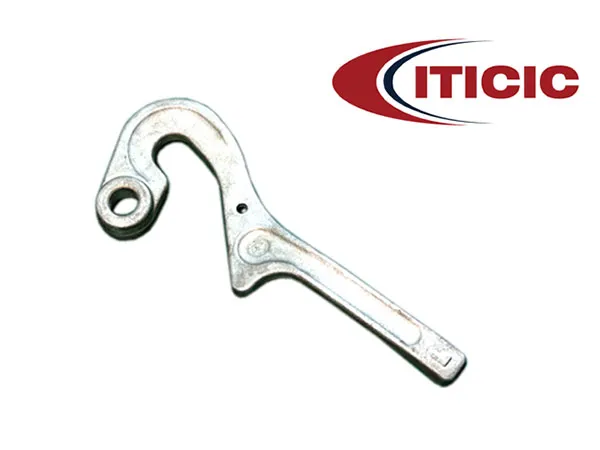
The starter motor is a critical component in internal combustion engines, responsible for initiating the engine's operation. The starter motor engages the flywheel to turn the engine over, allowing it to begin running on its own once the engine starts. Starter motor parts are often manufactured using forging processes due to the high strength, durability, and reliability requirements of these components.
Read MoreComponents of a Starter Motor: Key parts of a starter motor that are typically forged include:
Pinion Gear: This gear meshes with the flywheel to turn the engine over when the starter motor is activated.
Armature Shaft: A rotating component that transfers mechanical energy from the motor to the pinion gear.End Caps: Parts that house the motor's components, including the armature.
Drive Mechanism: The assembly that connects the starter motor to the flywheel and disengages when the engine starts running.
Field Coils and Brush Holders: These parts are typically made of high-strength materials, although not always forged, to handle the electromagnetic induction in the starter motor.
Forging Process: Forging is a manufacturing process where metal is shaped by applying compressive forces, either hot or cold, to a billet (a small piece of metal stock). The forging process is essential for producing strong, durable, and reliable starter motor components. The key steps in the forging process include:
Material Selection: Materials commonly used for starter motor parts include high-strength steels, such as carbon steel or alloy steel, depending on the component’s function and load-bearing requirements. Some parts might be made from copper alloys, especially if the part deals with electrical conductivity.
Heating the Metal: For hot forging, the billet is heated to a temperature where the metal becomes soft and malleable (usually between 1,200°F and 2,200°F or 650°C to 1,200°C for steel). This process makes the metal easier to shape and results in a more uniform grain structure, which improves the strength of the part.
Forging: The heated billet is placed in a die or mold and subjected to pressure using a hammer or a press. The metal is squeezed into the desired shape, taking on the form of the die. This process can be done in several stages to achieve the final shape.
Trimming: After the forging operation, excess material (flash) around the part is trimmed off to achieve the final dimensions and smooth out the part’s surface.
Cooling: The forged part is then cooled in air or through controlled quenching, depending on the type of material used and the required hardness of the part.
Heat Treatment: To further enhance the mechanical properties, the forged starter motor parts often undergo heat treatment processes such as:
Hardening: The part is heated to a specific temperature and then quenched rapidly to harden it.
Tempering: This step reduces brittleness while maintaining strength by reheating the part to a lower temperature after hardening.
Annealing: Some components may be annealed to relieve internal stresses and improve machinability.
Surface Finishing: Once the part is forged and heat-treated, it is often subjected to surface treatments, including:
Grinding to achieve precise dimensions.
Shot peening to enhance surface fatigue resistance.
Coating or plating for corrosion resistance, like zinc plating for metal parts exposed to harsh environments.
Inspection and Testing: After the forging process, the parts undergo strict quality control tests, including visual inspection, dimensional measurement, and non-destructive testing (NDT) such as ultrasonic or magnetic particle inspection to check for internal defects.
Strength and Durability: Forging produces parts with superior strength due to the aligned grain structure, making them more resistant to fatigue and wear, which is crucial for the repeated operation of starter motors.
High-Performance: Forged parts are ideal for starter motors, which need to withstand high mechanical stresses, particularly when turning an engine over.
Consistency: The forging process allows for high precision in producing components that meet the tight tolerances required for proper function in the starter motor.
Improved Safety: Due to the strength of forged parts, there is a lower risk of component failure, which is critical for the reliability of the starter motor in automotive and industrial applications.
Post-Forging Processing: After the forging process, some parts might require additional steps such as:
Machining: To achieve final dimensions and surface finishes.
Assembly: Forged parts are then assembled into the starter motor, which also includes brushes, coils, and other electrical components.
The forging process is essential for the production of robust and reliable starter motor components. By using forging, manufacturers can create parts that can withstand the harsh mechanical and thermal conditions of starting engines. This ensures the starter motor's performance and longevity, making it a critical component in automotive and industrial applications.

0086 379 64087220
Get a quote
Please leave your message here! We will send detailed technical info and quotation to you!